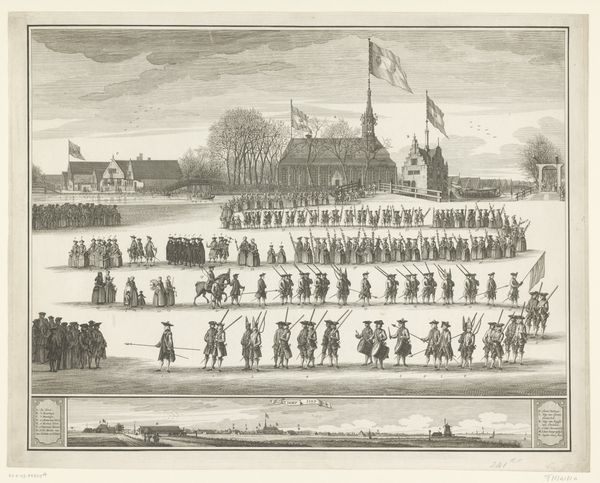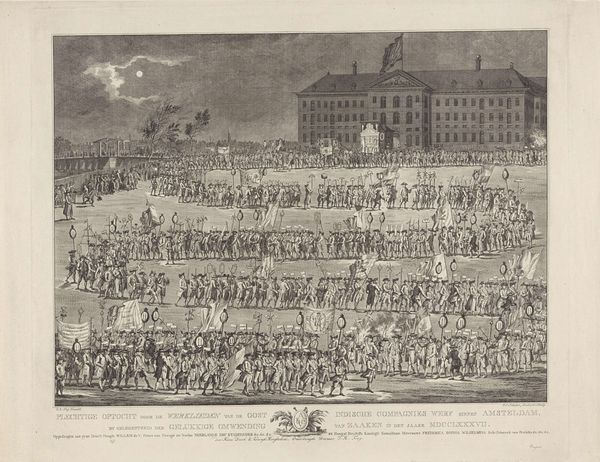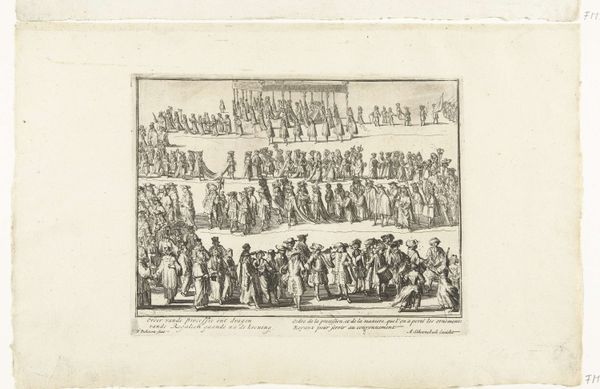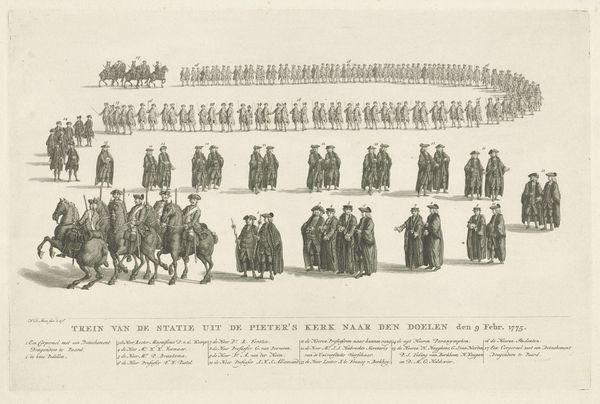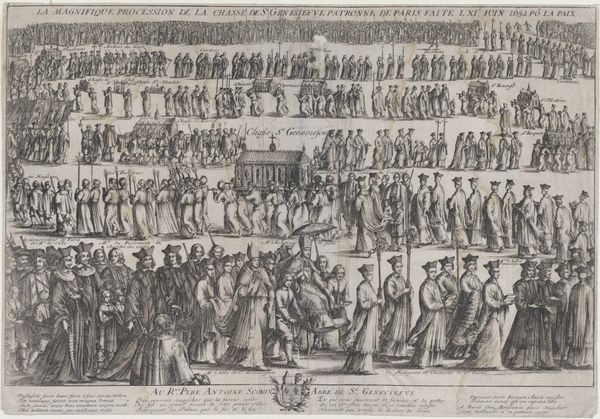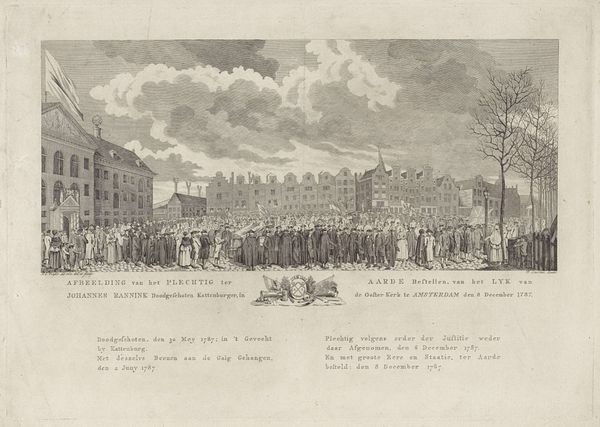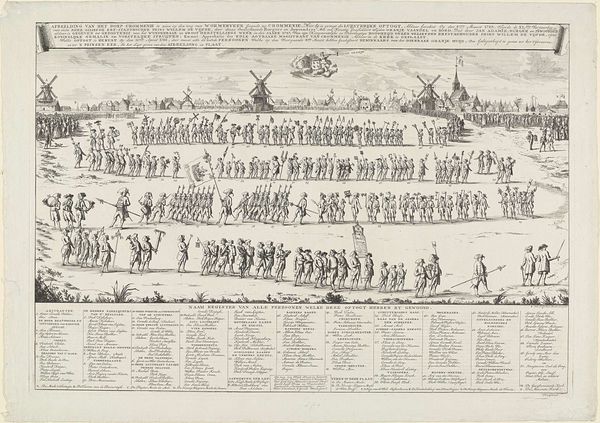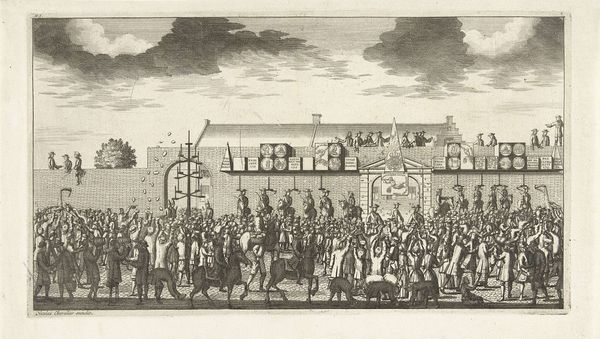
print, engraving
#
medieval
# print
#
cityscape
#
history-painting
#
engraving
Dimensions: height 252 mm, width 338 mm
Copyright: Rijks Museum: Open Domain
Curator: This engraving by Rienk Jelgerhuis depicts the funeral procession of Maria Louise in Leeuwarden, back in 1765. Editor: It's visually quite striking; all those figures, starkly arranged in lines, processing through the town. There's a real sense of sombre spectacle about the event being depicted. Curator: Indeed. Consider the sharp contrast afforded by the print medium. The use of engraving allows for incredibly fine lines, creating a detailed yet austere visual record. It seems the intent was documentary rather than expressive. Editor: Yet even with its documentary purpose, the medium and composition influence the feeling of it, right? The emphasis on line, for instance, emphasizes the scale of the undertaking. I'm especially drawn to the procession itself – who were these people involved in moving the body and what labor division did that mean at the time? Curator: Precisely. We might even apply semiotic analysis, viewing each grouping and placement of individuals, from city structures to figures. What statement is being made through their placement? For example, notice how the procession flows directly to that high wall; the church's entrance. Editor: I'm more struck by what's materially evident about the society through the print's implicit subject position, such as the clothing of the participants, which suggests a fairly elaborate textile production. What fabrics are used? What access did each member have? Curator: A fair point. We're given a visual depiction of the society's structure; an articulation of who is privileged to participate in such an event, the types of textile reserved for the higher figures or the religious participants. It speaks volumes about social and economic conditions. Editor: For me, it evokes reflections on the very hands-on nature of producing prints at this moment in time – thinking about the labour Jelgerhuis invests physically etching each figure for distribution, a poignant detail in relation to the portrayed burial. Curator: It shows how even an apparently straightforward depiction can open doors to understanding structures and forms—or spark a tangible material understanding of historical life. Editor: Precisely; whether considering the process of its making or how that mirrors those participating, this feels so profoundly informative about Friesland at that historical juncture.
Comments
No comments
Be the first to comment and join the conversation on the ultimate creative platform.
